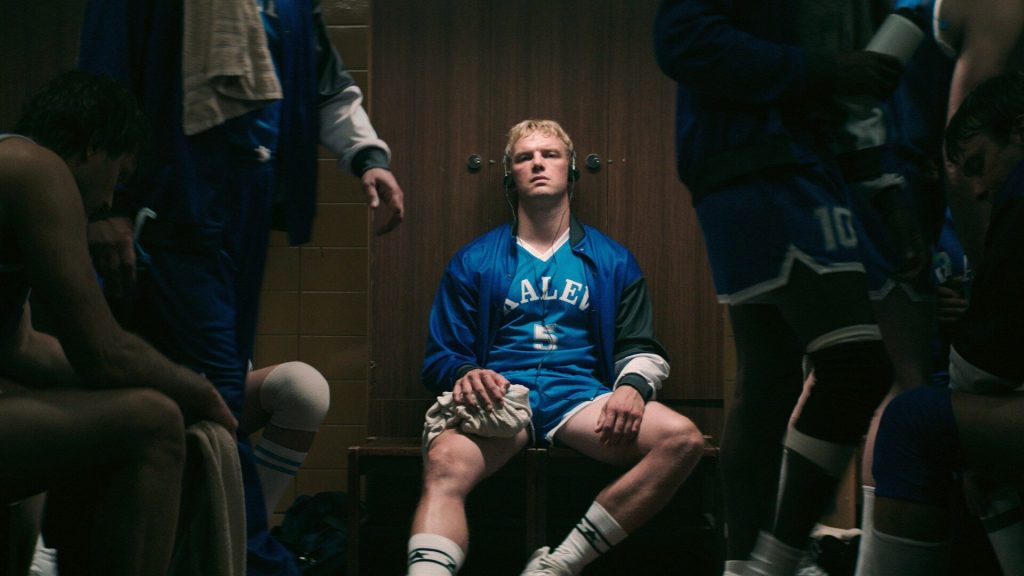A Basketball Game is Like a Battle
When Estonian producer Pille Rünk came up with the idea of a film about the biggest event in her country’s sports history, she knew immediately who to trust to execute it well. Experienced in shooting big events with multiple cameras, director Ove Musting agreed to take on the project out of curiosity. His debut Kalev follows the journey of the titular Estonian team from the very bottom of the qualifications list, to the glass trophy of the last USSR basketball championship. We sat down with Musting to discuss the casting process, shooting on the court and keeping a team focused.

Q: Much of the film revolves around the Kalev team actually playing basketball, so how did you go about the casting? Did you look for players who could act or the other way around?
A: The casting took a long time. After the first selection, I was keen to try some ideas and see how they would work on the court, but we realized we had to change some actors. And yes, they were amateurs and had to learn how to play. Due to COVID, they had to do that several times. We were getting ready to shoot in May and they trained so much, but then we had to postpone the shooting for August. Then training again and postponing again, waiting for a year and a half. When we finally started to shoot the game scenes, I got COVID. So I was at home, with a laptop, while my first assistant Tõnis Pill was on the court. This was quite an interesting experience.
Q: How did you manage to create a team spirit for the actors? That’s a very important element of the story and they seem to have a natural cohesion.
A: I thought about it a lot – how to make them feel close to each other, like a team. And also in what place that leaves me as a director. I participated in some of the training, because I thought maybe I should even try to play basketball with them to create this feeling of togetherness. But then I understood that I should keep my distance because I am for them what a coach is to the basketball team. Actors always fear and respect directors, so I thought there must be a balance. They spent so much time together, working and training. Some of them had never played before, so they had the same problems as a real player, the same injuries. And if you all feel the same pain, it makes you a stronger team.
Q: Those scenes on the court are captivating, but technically demanding. What was your approach to shooting them?
A: We designed the plays and the actors tried to recreate them bit by bit, to see what it might look like. Then I started to work on the camera angles. I remember being really impressed by the first scene of Saving Private Ryan, when the boats get to the shore and all hell breaks loose. I wanted to create the same feeling for our games, because a basketball match is like a battle and I wanted to be in the middle of it with my camera. When you watch a game on TV, the viewer is always late – the camera is following the ball, but it can’t see what happens with the players’ positioning. I wanted to follow the ball and the positions at the same time, which took a lot of preparation.
Q: How did you re-imagine the character of the captain, Aivar Kuusma, and that of the team’s latest recruit, Gert Kullamäe?
A: I was interested in the story of Kuusma, who is somehow always in conflict with the coach. As for Gert Kullamäe, he represents all the players who sit on the bench who are rarely mentioned. There was a coach who told me a lot about the perspective of a reserve player, always waiting for an opportunity, so I wanted Gert’s story to be included. At the crucial moment, the senior members of the team ask the coach to put him in. In a situation where the game is already lost, you feel you have to do something and yet everything you do is wrong. Then you have to wait for another opportunity. This was interesting for me, showing the life of the whole team, not just the stars. That’s why Gert is in the film – it’s disappointing to see someone waiting for a chance, and that’s life.
Q: How has the reception of the film been in Estonia so far?
A: After the premiere I was sure we would get some bad reviews, because these events are still fairly recent; the film is critical of the journalists of the time, but many of them are still out there and working in newspapers. However, that didn’t happen. Actually we got a very positive reception.
Haji Safarov
Jovana Gjorgjiovska
© FIPRESCI 2022
